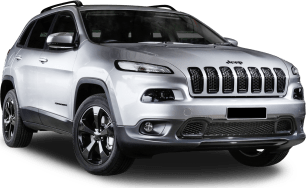At just under 4.7m long, a fraction over 1.8m wide and a bit more than 1.7m tall, the current Nissan X-Trail is a large mid-size SUV.
That allows for a generous amount of space up front with more than enough breathing room between the driver and co-pilot.
Storage is pretty handy, too, with a decent size lidded ‘butterfly door’ box between the seats (which doubles as a centre armrest), two cupholders in the centre console, a lower level tray underneath, door bins with space for large bottles and a decent glove box.
Move to the second row and at 183cm tall I have plenty of headroom and legroom, with the latter variable thanks to the seat’s ability to slide and open up more room for the two third-row occupants if required.
Again, there are bins in the doors with a cavity able to accommodate large-ish bottles, two cupholders in the fold-down centre armrest and map pockets on the front seat backs, while adjustable ventilation gets a big thumbs up.
Three full-size adults across the second-row seat is a recipe for discomfort but two grown-ups or a trio of up to mid-teenage kids will be fine and the rear doors deserve a big shout out.
First, they open out to 90 degrees which makes getting in and out of there s-o-o much easier and second, pull-up sunshades are always a welcome addition.
The third row is a kids-only zone, but the flexibility those two spots offer is significant and Nissan’s provision of big outer armrests with storage and drink holders built in is a thoughtful touch.
Connectivity and power options run to USB-A and -C ports (for streaming and charging) plus a 12-volt socket and wireless device charging pad in the front. There’s an identical pair of (charge only) USBs in the centre row and another 12-volt outlet in the boot.
Speaking of which, with all seats up the seven-seat X-Trail’s boot capacity shrinks to that of an oversize handbag (realistically, two or three soft bags), but with the 50/50 split third row folded down you’re provided with 465 litres of volume (to the roof) which is enough to easily swallow the three-piece CarsGuide suitcase set. And the 40/20/40 split second row’s sliding ability again allows you to play with the space available.
Worth noting a space-saver spare is provided (a much better option than a ‘roll of the dice’ repair/inflator kit) and maximum braked trailer towing capacity is a handy 2000kg (750kg unbraked).












.png)












































.png)























 copy.png)
















